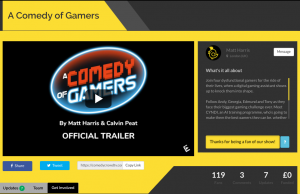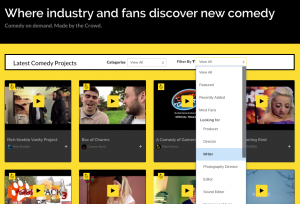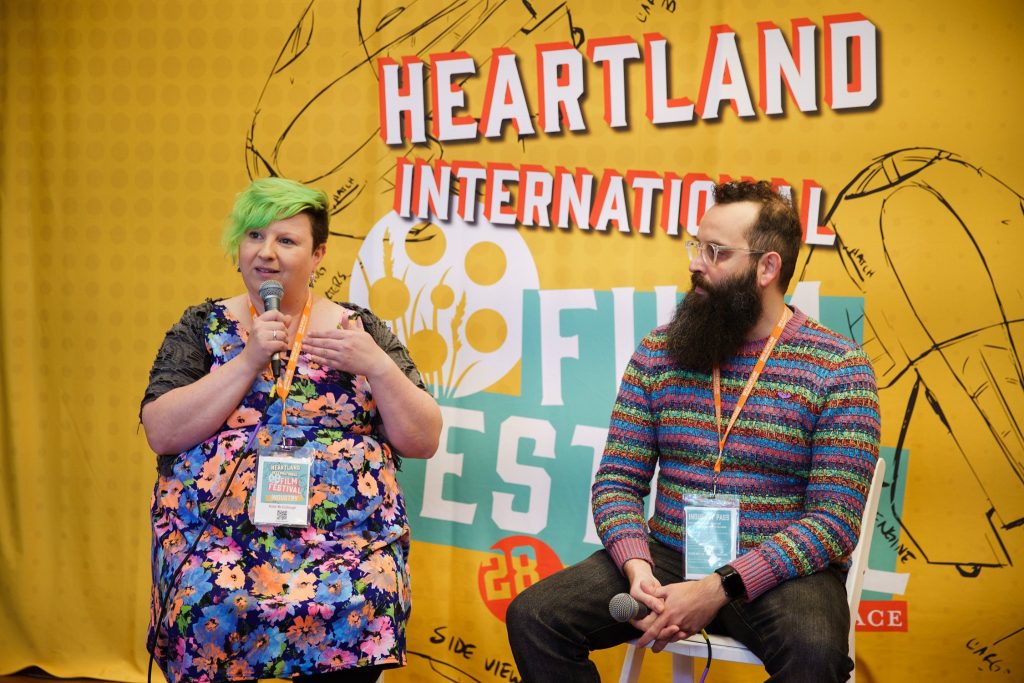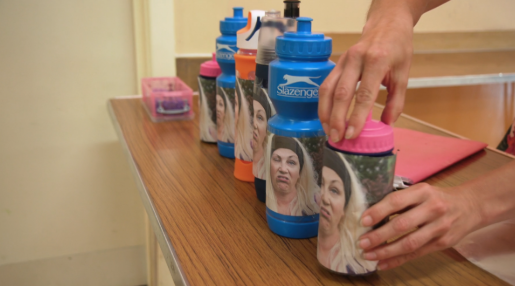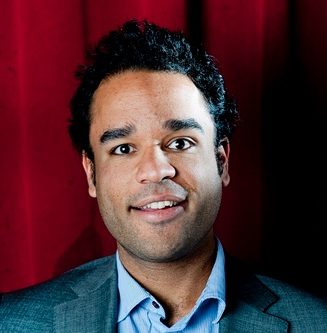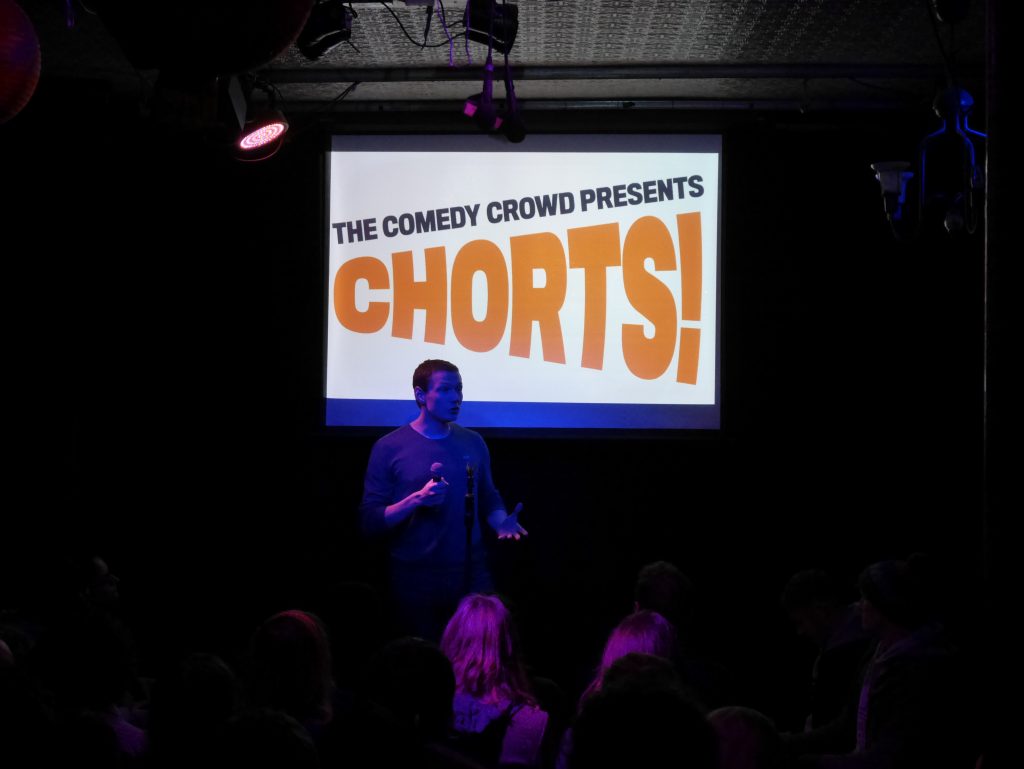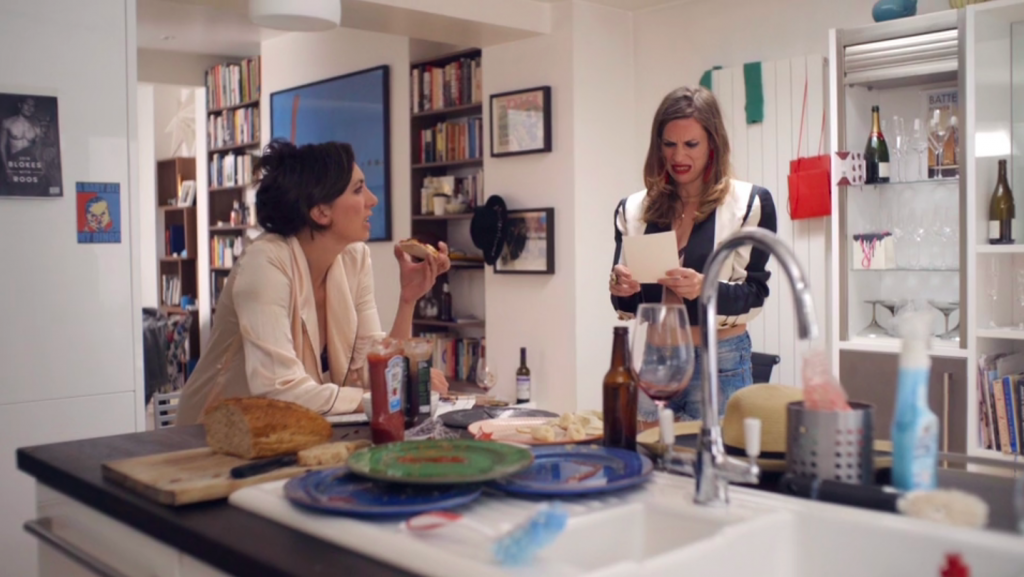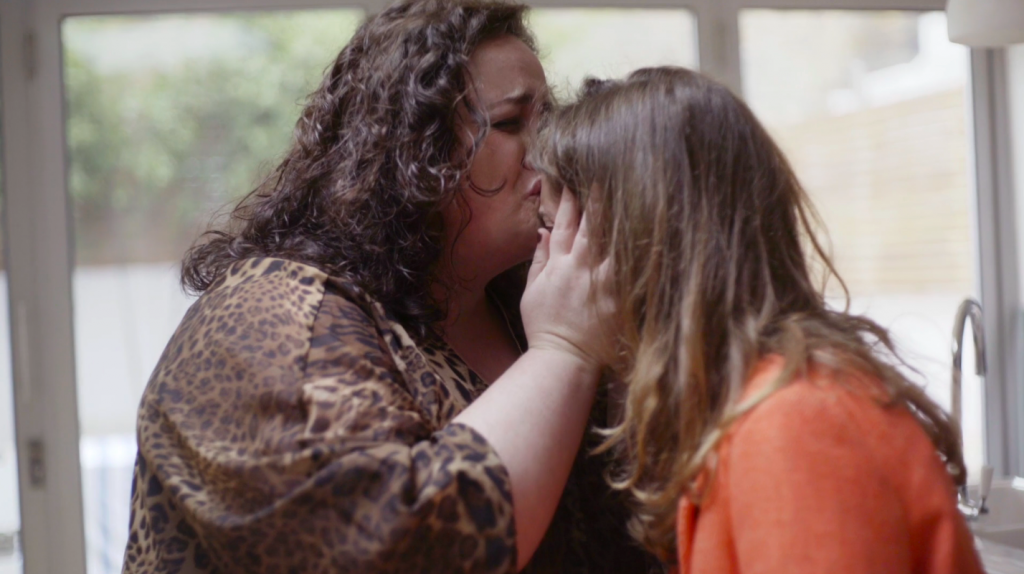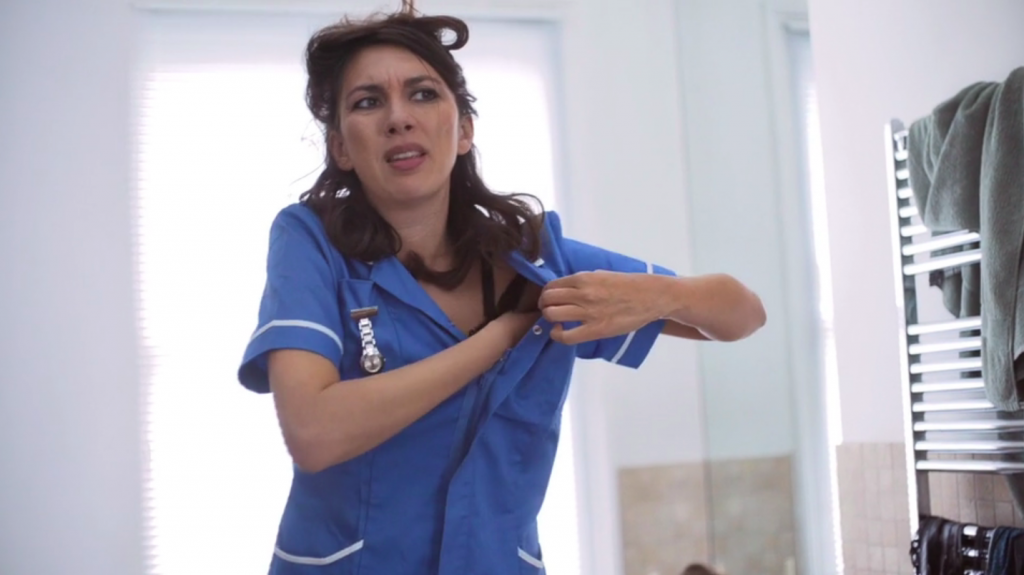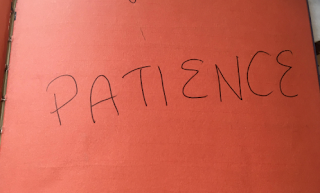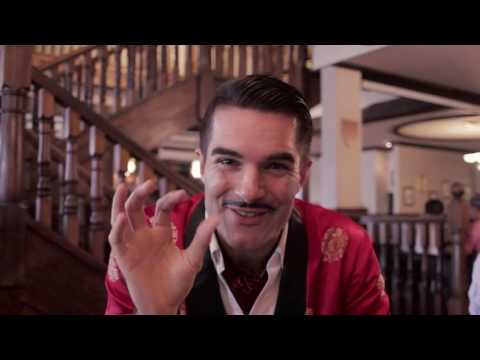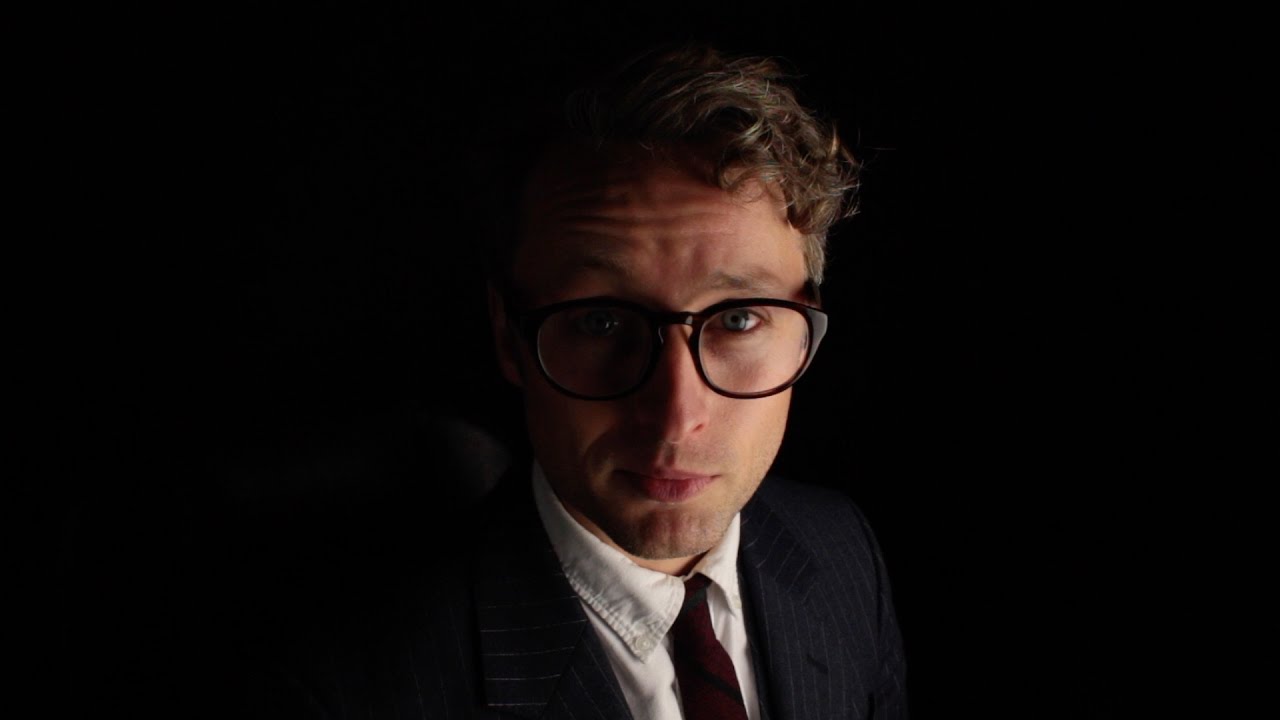By Joanna Tilley
Hello and welcome to the first instalment of my guide to help writers through the daunting task of bringing their creative projects to life. Before 2018, I was a virgin in all aspects of film making, and while I still have so much to learn about making content, I would like to share some of the things I have picked up this year.
In fact, as there is quite a lot to get your pretty little heads around, I have divided this information into a ‘before the shoot’ article, a ‘during the shoot’ article and a ‘how-not-to-shoot-yourself-in-the-head-during-post-production’ article (I might change the name of this last part).
A little about my story before I get into the meat, so to speak. This time last year, if anyone had told me I was going to film my sitcom pilot I would have laughed in their faces. ‘Make it yourself’ were my three least favourite words to hear when I was discussing my sitcom project OLD. I was a writer, for goodness sake, it wasn’t my job to get involved in the filming and anyway what did I know about production, direction, casting, and all the rest of it. Nowt.
However, this time this year, I am a few weeks away from my pilot sitcom OLD hitting the big screens of YouTube and I am gearing up for the final furlong of this adventure.
So, without boring you about why I changed my mind (it all comes down to timing and energy levels really), let’s get straight to the sausage.
Here are my TOP 10 TIPS for ‘BEFORE THE SHOOT’:
1. SET A FILMING DATE
Without a deadline, so many writers do not write. Without a deadline, other writers lose their minds. People complain about deadlines, but we all love them really. What I am trying to say is that often without a deadline, not much gets done. I didn’t realise this when I was in the early stages of organising the shoot. I wanted to get location, cast, crew sorted and then confirm a date. Nah-ah. As soon as I set a date it felt real, I had something to work towards and things started happening. Exciting things.
2. USE ACTORS
This may sound pretty basic but apparently even Ricky Gervais tried to film the Office at one stage with regular Tom and Janes (just go with me). His advice afterwards was ‘don’t do it’ – my advice is similar to Ricky’s ‘don’t do it.’ I think the temptation when you are filming your own project is to want to be naturalistic and a bit alternative, try out something different, give a few unknowns a go. The problem with this is we can forget that acting is a skill and a career. Actors have trained, or learnt, to become an actor and whatever stage they are at, they know a huge amount more than a non-actor. Unless you are extremely lucky, you will find that delivery, timing and confidence are lacking in the Tom and Janes. I worked this out quite early and all it really took was a few read throughs with people. The difference was striking immediately. For the main parts at least – listen to myself and the Gervaister – use actors!
3. ASK QUESTIONS
I am going to keep this one really short because it is a simple concept. Ask people who have already filmed projects for their tips. You don’t need to heed every piece of advice, but if the same things keep popping up, then these are likely the bits you need to remember. For me, the main two things were ‘get the sound right’ and ‘surround yourself with more experienced people.’
4. SURROUND YOURSELF WITH MORE EXPERIENCED PEOPLE
Well this was hardly a difficult challenge… But I suppose the point is get some good brains around you. Brains that have done this before and are not going to get frustrated by working with someone they may have to baby a bit along the way. So get nice people as well as experienced people on board, people with a passion for helping others to grow. One of the best decisions I made was teaming up with cameraman Graham Trelfer, who filmed OLD, but also helped me produce it. I was getting to the point where I was almost having sleepless nights worrying, but almost as soon as I had someone to hold my hand a little, the stress dissipated and I was able to do sleepy again. Hoorah! Check the IMDb, showreels etc of the cast and crew that you plan to use and then make sure to meet up with them ALL in person. Sound is so important, please don’t just hope for the best. Bad sound will kill everything. Our sound guy Cristian Majer also happened to be full of life and knew when to pick the energy up – these people are vital on set. Also if you know friends who are passionate about either you or your project, then ask them to be part of the crew. We couldn’t have filmed our pilot in four days without the tireless work of Assistant Director Robin Bailes (who I knew from London Comedy Writers) and Camera Assistant Maddy Couch. They were on fire!
5. ACTORS WILL WORK FOR FREE
Some people may disagree with not paying actors for a job. Each to their own. I am just here to say that I didn’t pay any of the actors involved in OLD, and I don’t feel bad about it. This is because I treated and fed them well, because I believe they enjoyed themselves, but mainly because they thought that being involved in my sitcom OLD would be good for their careers. Fingers crossed on that one, eh! The only issue with this is if the actors are then offered paid gigs you have to understand that they may cancel on you last minute. That’s why it is a good idea to have stand-ins for all members of the cast. The director for OLD was also pretty cheap, because that was me. But when it came to the people with the equipment (camera and sound), I did part with some money – but it was more like a payment for the equipment, rather than for their time. Often you have to go on your gut instinct when it comes to how much and all that awkward stuff. Mandy is a good website to find cast, and Shooting People is a good website for crew. Contacting talent agencies is also a useful way of finding more than one actor at a time. The main point I am making is that you can get a cast and crew together without it costing too much money. The key to getting people involved on the cheap is that they have to believe in you.
6. TALK LOTS (AND KNOCK ON STRANGER’S DOORS)
Okay so I don’t mean total strangers. The point I am trying to make is don’t be too secretive about your project. Talking to people about it often reaps some very interesting rewards. For example, I got the singer, actor and West End star Peter Straker to play the role of Fred after talking to director Steven Dinsdale, who I knew through my sketch group Monkey Wedding. Steven had seen Peter sing at a party and thought he would be good for the part. Peter Straker read the script, liked it and offered his services straight away. He was the sort of talent that made other people interested in getting involved. If you can get talent on your project, is it absolutely priceless. And knocking on stranger’s doors did sort of happen. There was one day when I went around the local village Axbridge (where OLD was filmed) and basically through word of mouth found myself two make-up artists, a local cat to play Gus and a new location. The bottom line is – people want to be involved in film because it is exciting! So do knock on doors, but maybe get a heads up about the person behind the door first.
7. ADAPT TO CHANGES
Yes a new location, that wasn’t in the original plan. One of the reasons, potentially the main reason, that I got the ball rolling on OLD was because I had secured a castle to film it in. This was very exciting, a castle, a free castle too, what a great start! Anyway, for reasons I can’t be bothered to go into, the castle fell through and I was left with cast and crew – but no location. Oh bugger. However, and it is quite remarkable when I think about it, I found a new location on the same day as the old one disappeared behind its curtain walls. Part of this was luck, but part of this was also because I spoke to people (see tip 6). I spoke to Juliet Maclay who owns the Roxy Cinema in Axbridge and she kindly informed me of all the venues in the area that might be suitable. I wondered up and down valleys, through streams and at the end of my mission found The Parsonage. Owner Patricia Filer immediately said she was happy for me to film there and wouldn’t charge either. The Parsonage was also a B&B so some of the actors stayed there on shoot – thus it ended up working out well for all concerned. So what I am saying in a convoluted way is don’t be afraid of setbacks, because they might be opportunities in disguise. (I’m sorry – I clichéd – I apologise.)
8. WHAT CAN YOU AFFORD TO DO? (time & money wise)
Okay this is a question – not a tip as such, but I feel it is important that I bring it up. I decided to film a 30-minute pilot script mainly because that is the length of the one I had written. I wanted to see this script in the flesh and was committed to making a full episode for people to watch, and for some of those people to enjoy. However, and this feels like a big piece of advice, I would not advise anyone (unless they are as equally mad as me) to film 30-minutes of TV. 30 minutes of TV is a lot of TV and a lot of work. And it is expensive especially when it comes to post-production. If I was planning to film something before it was written, which might be the right way to go about it, I would do two things – 1) Film half an episode or a condensed episode (10-15 minutes). 2) Limit your characters. As my script was already written, there was no way around the fact that I had to find 8 actors and 1 cat. This is a lot of people to find, this is a lot of logistics to organise and even if you aren’t paying the actors, you will have to pay for food, travel, any accommodation required. A smaller cast is also easier to manage on set. Time is needed to work out when actors should be on set, and for putting them into make-up, and this was quite stressful. With three or four actors, a lot of this stress can be avoided. Another piece of advice here is, and although I love Tango the cat to bits, be wary of working with animals. It adds so much more time to proceedings. But I am sure you guys know this one – don’t work with children and animals, you aren’t stupid… I am a little.
9. BORING TIP ALERT
Contracts. Perhaps my least favourite part of the whole project. I was advised by my guru Graham Trelfer that I needed to write up contracts for every cast and crew member. It sucked. If you know the right sort of lawyer, do get their advice on this. I didn’t – so what I did was ask people who had done this before to look at their contracts and also wing it. You basically need people to sign over the rights to their image, voice, actions etc etc. Another thing is that some actors, or more likely their agents, will ask for clauses to be inserted into the contract. THIS IS VERY IMPORTANT THIS BIT. Do not make the mistake that I did and send the contracts to the actors too late. Because they can refuse to sign them. And then either you are left with no actor a day or so before filming or you have to concede to their demands, even if they want a full-time masseur who provides a happy ending. Or something. Just get them to agree to it in advance, so you aren’t in that situation. It’s all about the power play, folks. Oh – and also get insurance for cast, crew, location and equipment – it isn’t too expensive and Adam King at Towergate Insurance was wonderful. Finally, to bring this boring section to a close, write up a call sheet so cast and crew know what the heck is going on. Instead of directly pinching ones online, it is nice to add a personal touch and a bit of colour. I think it makes people feel more valued if they see you have made some effort not to be copy and pastey.
10. DON’T BE OBSESSED WITH BEING LIKED
The great thing about filming your own project is that you go from someone who has no power to someone who has all the power. I went from having my script rejected by people in the industry, to someone who could choose cast members, and make all these interesting decisions. It was wonderful. It was a well-needed change and I recommend writers putting themselves in the power seat. Far too often they don’t have enough of it. The thing with power is it brings great responsibility (again I’m sorry!). So that means it is important to be respectful, kind and understanding – you know, a decent person. When in doubt, just think would I like this done to me, and if you wouldn’t, don’t do it. However, saying this, it is also important to be firm and accept that sometimes you might have to let someone down, or reject someone, or be a bit clinical. You are not going to be able to write, produce and direct a film if you want to be liked by everyone. Writers can be very emphatic and intuitive human beings – and I think sometimes it means they are too nice. You don’t have to be a dick, but if there is a greater goal to be achieved, you can’t be overly concerned about being liked.
11. THERE’S NO TIP 11 – I JUST DIDN’T WANT THIS ARTICLE TO END THIS WAY
I think one of the things you may have gathered from reading this article is that there is a lot of work required to filming your own project. This isn’t the sort of thing to embark upon if you are half-hearted about your script or concept. I love my sitcom OLD, I love the world and most of all I love the characters, they have been with me for years and I have fought for them every step of the way. But boy has it been a tough old ride to get to this point. This brings up another thing I should have mentioned earlier possibly is that if you can partner up with someone at the beginning, do it. Writing partners are difficult to find, but if you find/have one, it will be a more fun and less stressful journey to go through this together. Deciding to film my sitcom is without doubt one of the best things (if not the best thing) I have ever done, but at times it has also been incredibly lonely. It is still tough and I have needed to have so much patience (more about this in part III of this guide). I was lucky this year as I was freelance writing but to be honest I had lots of time to work on this project. I wouldn’t have been able to do this with a full-time job. However, this is partly because I chose to do a half-hour sitcom, so if people are planning 5 or 10 minute pieces, a lot of the stress, cost and time will be minimised.
Before I go, I should also put in a mention to my dad – Andy Tilley – who when I suggested filming OLD, immediately said I should film it in Axbridge, a small town in Somerset where he lived. A light bulb clicked in my head when he said that. I knew that I would be in the countryside, surrounded by friendly, helpful locals, and that I had the support of my father. My dad was right too, I soon got in touch with journalist and actor Harry Mottram who put me in contact with some local actors in the area. My dad’s enthusiasm was exactly what I needed to hear. However, if he had told me to film it, I would have ignored him just like I had everyone else. We all need to do things in our own time.
So punk – the question is – are you ready?
CLICK HERE to have a look at the highlights from the pilot for OLD.
And if you have any questions, then fire away down below, on Twitter @joannatilley, or on my OLD Comedy Crowd project page.
If you have read this far, I like you, so you get a special bonus tip and that is: AVOID GIMICS. Seriously if something feels like a gimic, and is taking up too much mental space, that is often because it doesn’t work. It’s that old cliche of making something for yourself, and not with the audience too much in mind. That’s why gimics don’t pay the bills, yo! Bye bye for now and check out part 2 here. x




